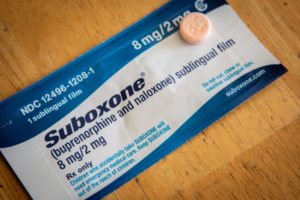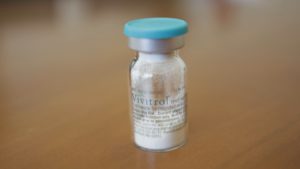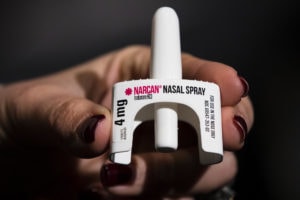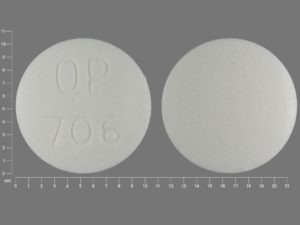Medication Assisted Treatment Leads to Great Outcomes
- Medication Assisted Treatment Leads to Great Outcomes
- Treating Patients with Drugs to Overcome An Addiction
- Benefits of MAT Drug Treatment
- Specifics About MAT Treatment Medicines
- A Quick Overview of MAT Medicines
- MAT Drugs Used to Treat Opioid Dependency
- Drugs Used for Treating Alcohol Abuse
- Different Approaches to MAT
- Drug Therapy and Counseling
- MAT Substance Abuse Treatment Objectives
- Avoiding a Relapse: Warning Signs
- Making the Most of MAT Rehab
Drug addiction or an alcohol use disorder (AUD) is a destructive and debilitating condition that can have far-reaching consequences. It can wreak havoc on the lives of individuals and their families, and is a challenge to tackle.
Fortunately, there is hope for those battling an addiction. Medication Assisted Drug Therapy (MAT) has become a cornerstone of addiction treatment, offering a whole-patient approach to help individuals recover from addiction and build a healthier lifestyle.
This article and guide will provide a comprehensive overview of MAT and explore the various benefits associated with this type of therapy. It will discuss the advantages of MAT in terms of its safety, efficacy, and overall long-term advantages.
Additionally, it will examine the benefits for individuals, families, and communities.
Indeed, drug addiction is a serious problem that can be difficult to overcome. Medication assisted drug therapy (MAT) provides all the support needed so a patient can realize long-term and ongoing sobriety.
In a nutshell, MAT combines the use of medications, such as methadone and buprenorphine, with counseling and other therapeutic services to help people stop using drugs, prevent relapse, and live a healthy and productive life.
This evidence-based treatment approach ensures that the combination of medicine and psychosocial support along with safety protocols, ends in successful outcomes.
Treating Patients with Drugs to Overcome An Addiction
Medication assisted drug treatment, referred to as MAT, includes the use of several key drugs. These drugs help a patient withdraw or stop using opioids or alcohol by controlling cravings and changing a patient’s brain chemistry.
Because the use of opioids is a prevailing problem in the U.S. MAT has been found to be successful in reducing the need to take these kinds of painkillers on a regular basis. In fact, opioids are used and administered to help addicts achieve a successful end to their addiction.
Types of MAT Drugs
Drugs in MAT programs that are used to reduce cravings are opioids, such as methadone, buprenorphine, and naltrexone, as well as non-opioids, such as naloxone and disulfiram.
Again, each of these medications has been shown to reduce cravings and allow individuals to live a more healthy and productive life – life that is free from the negative impact of drug use. Many individuals who use drugs also suffer from co-occurring disorders, such as anxiety, post-traumatic stress disorder (PTSD), or depression, which can be treated with other medications.
Benefits of MAT Drug Treatment
Practitioners and patients realize many benefit connected with MAT, including the following:
- Reduced cravings and an improved ability to avoid relapse
- A reduced risk of overdosing
- Better overall health and wellness
- Better functioning with respect to daily tasks
- Improved focus
- Better relationships with co-workers, family, and friends
- An improved ability to engage in self-care and be more mindful of health concerns
- An improved ability to hold employment and increase income
- An improved ability manage co-occurring disorders
- The ability to lead a more meaningful and productive life
When drugs are used to treat addictions, the relapse rates notably decrease. Many patients who receive drugs for alcohol or opioid use are shown to still be sober after two years,
Specifics About MAT Treatment Medicines
To treat alcohol and opioid use problems, the Food and Drug Administration (FDA) has authorized a number of different drugs for MAT programs. MAT drugs treat the psychological urges and withdrawal symptoms that lead to chemical imbalances in the body.
The drugs used for MAT are evidence-based therapy choices that do not just swap one medication for another.
Due to the possibility of abuse, several of the drugs used in MAT are considered restricted substances. The Drug Enforcement Administration (DEA) divides medications, substances, and certain compounds used to produce drugs into five different categories, or schedules. These classifications signify a drug’s authorized medical use and potential for abuse.
A Quick Overview of MAT Medicines
As shown, a variety of medicines can be used to treat AUD or OUD. Let’s look at a quick rundown:
Acamprosate: A stimulant affecting the central nervous system (CNS) through gamma-aminobutyric acid (GABA) neurotransmission as well as an antagonist of excitatory amino acids – used to maintain abstinence from alcohol
Buprenorphine: A long-lasting opioid used to treat opioid use disorder
Disulfiram: A non-opioid medication used to treat alcohol use disorder
Methadone: A long-lasting opioid used to treat opioid use disorder
Naloxone: A non-opioid antagonist used to treat opioid use disorder
Naltrexone: An opioid antagonist used to treat opioid use disorder
Other medications, such as antidepressants and antianxiety medications, can also be used in combination with opioid and non-opioid medications to treat co-occurring disorders.
Examples of FDA Approved Brands1
- Belbuca – Buccal film (daily- every 12 hours) – (buprenorphine)
- BUP-XR – Extended-release buprenorphine injection of Sublocade
- Buprenex – Intravenous/Intramuscular administration – (every 6 hours) – (buprenorphine)
- Butrans – Transdermal (weekly) – (buprenorphine)
- Campral: Acamprosate (tablets)
- Cassipa – Sublingual film (buprenorphine and naloxone)
- Dolophine – Pills (methadone)
- Methadose – Liquid (methadone)
- Revia – (Tablets) (Daily) (naltrexone)
Sublocade – Extended release intravenous injection (buprenorphine) - Suboxone – (buprenorphine and naloxone)
- Vivitrol – Extended release intramuscular (IM) injection (naltrexone)
- Zubsolv – Tablets (buprenorphine and naloxone)
MAT Drugs Used to Treat Opioid Dependency
Buprenorphine, methadone, and naltrexone are used to treat opioid use disorders (OUDs) caused by semi-synthetic opioids like oxycodone and hydrocodone as well as short-acting opioids like heroin, morphine, and codeine.
Buprenorphine suppresses and lessens opioid cravings while medicines like methadone reduces opioid cravings and withdrawal symptoms and blunts or inhibits the effects of opioids.
Buprenorphine (Suboxone)
Buprenorphine is a partial agonist, which means that it only partly binds to the opioid receptors in the brain, expelling any existing opioids from those receptors as well as preventing the attachment of new opioids. Some brand names of buprenorphine include: Belbuca, BUP-XR , Buprenex , and Butrans, Suboxone, Sublocade, and Subutex.
For up to 72 hours, buprenorphine works to ease withdrawal. It does not have the full euphoric impact of an opioid like heroin or painkillers, despite having a little amount of it. Additionally, the euphoric effect has a cap, so even increasing the dose won’t result in a bigger euphoric impact.
Buprenorphine misuse is a possibility, but it only affects those who don’t already have OUD.
Compared to methadone, buprenorphine is accessible in a larger range of locations, including medical offices, correctional facilities, and clinics.
To write a prescription for buprenorphine, a competent doctor must complete additional training.
Also, before using buprenorphine, you must discuss with your prescribing physician any other drugs you may be taking or any other medical conditions you may have.
While using buprenorphine, you must refrain from drinking alcohol or using sedatives since this may result in an overdose.
If you get pregnant while on buprenorphine maintenance, you should talk to your doctor.
A film that is applied to the cheek or under the tongue, a tablet, an injection, or an implant are all ways to get buprenorphine. For the purpose of blocking the euphoric effect and lowering the likelihood of abuse, the drug is often coupled with naloxone.
Side Effects of Suboxone (buprenorphine):
Adverse effects from taking the drug may include:
- Constipation
- Headaches
- Nausea or vomiting
- Dizziness
- Tiredness
- Sweating
- Dry mouth
- Muscle cramping or aches
- Insomnia
Speak to your doctor right away if you’re experiencing any of the above symptoms.
Naltrexone
Naltrexone is an opioid drug used to reduce the elation experienced by opioid users. It does this by blocking the euphoric and sedative effects of the drugs. It is sold as brand name
- Revia (tablets that only have Naltrexone)
- Cassipa (a sublingual film that has buprenorphine and naloxone)
- Suboxone ( a tablet that has buprenorphine and naloxone)
- Zubsolv ( a tablet that has buprenorphine and naloxone
- Vivitrol (administered by an intramuscular shot that puts in a device that gradually dissolves and has only naloxone)
As an opioid antagonist, naltrexone occupies the brain’s opioid receptors and prevents the opioids from binding to the receptors.
Naltrexone is mainly used to treat relapses and not withdrawals. That’s because it does not cause the same euphoric effects associated with stronger opioid painkillers. Before using Naltrexone, OUD patients must be opioid-free for at least 7 to 10 days.
Again, while using this drug, patients must refrain from using opioids as well as alcohol, sedatives or tranquilizers.
Possible Adverse Effects of Naltrexone
Some possible adverse effects of naltrexone include:
- Stomach upset or vomiting
- Diarrhea
- Headache
- Insomnia
- Anxiety
- Joint or muscle pain
- Responses at injection site
- LIver damage
- Asthma
- Pneumonia
You should see your doctor if you encounter any of the aforementioned negative effects while taking naltrexone. You may need to switch to a different medicine or change the dosage. Never stop taking Naltrexone without first talking to your doctor.
Naltrexone if frequently taken orally or administered intramuscularly.
Vivitrol (Naltrexone Injection)
Vivitrol represents an extended release formula of the opioid receptor antagonist, naltrexone.
The FDA approved the medicine in 2010 to prevent a relapse to opioid dependence. It is given as an intramuscular (IM) injection monthly for quick absorption.
Naloxone (Zimhi, Narcan, Kloxxado) for Opioid Overdose Reversal
The World Health Organization (WHO) lists a variety of drugs that are deemed necessary for a well-functioning MAT system, including naloxone. It is more commonly known as it’s most popular brand name Narcan, and newer versions Zimhi and Kloxxado.
Naloxone, a non-opioid antagonist, can be successfully used to reduce or prevent the harmful effects of an opioid overdose. It is a little different than the rest of medications in this article because it is a short term emergency medication to restore breathing in an overdosing person.
Adverse Effects of Narcan
The adverse effects of taking naloxone may include:
- Racing heart
- Body aches
- Agitation
- Goosebumps
- Respiratory distress
- Vomiting or nausea
If you have any of the above-listed complaints, you need to contact your physician without delay.
Methadone
Only SAMHSA-certified opioid treatment programs (OTPs) are authorized to distribute methadone2, which is used to treat people who have been diagnosed with opioid use disorder (OUD). It is marketed using the brand name Dolophine (methadone pills) and Methadose (liquid methadone)
Because it is a full agonist, methadone completely binds to the brain’s opioid receptors. It does not have the euphoric effects associated with opioid medications like heroin and oxycodone. Therefore, the painkiller can be used successfully for withdrawal or OUD maintenance.
Because methadone is an opioid, only clinics with a specific license may administer it. A patient may be permitted to take a daily dose at home in between clinic appointments after a period of time. This helps them to become stabilized and follow the prescribed dosage.
The duration of therapy varies from patient to patient, but is often required to last at least a year. You must gradually go off the medication under medical supervision once you and your doctor agree that you are prepared to move on without methadone.
Side Effects of Methadone
Methadone side effects might include:
- Respiratory difficulty
- Racing heart
- Chest discomfort
- A rash on the face or neck
- Dizziness
- Disorientation
- Hallucinations
Don’t stop the medication before speaking to your doctor first.
You should talk to your doctor if you’re considering stopping your methadone medication if you find out you’re pregnant.
Drugs Used for Treating Alcohol Abuse
The most often used medications for treating alcohol use disorder (AUD) are acamprosate, disulfiram, and naltrexone. Although they do not treat the disease, they work best for those who take part in a MATrecovery program.
Acamprosate
For those in recovery who are no longer drinking alcohol and wish to abstain from drinking, there is acamprosate. It successfully discourages alcohol use, but has little effect on the withdrawal symptoms that result from alcohol consumption.
Acamprosate (brand name Campral) has not been shown to be effective in those who continue to use alcohol, illegal substances, or abuse prescription medications. The drug is usually started on the fifth day of abstinence and takes five to eight days to fully take effect.
The treatment drug is available in tablets and should be taken three times daily, ideally at the same time each day.
Side Effects of Acamprosate
The drug’s adverse effects might include:
- Anxiety
- Dizziness
- Appetite loss
- Diarrhea
- Upset stomach
- Insomnia
Disulfiram (Antabuse)
Disulfiram is a non-opioid medication that treats persistent alcoholism and works best for those who have previously undergone detoxification or are just beginning their sobriety journey. Disulfiram, which comes in tablet form, is administered once daily.
The drug should not be taken when the patient is inebriated, nor should it be used 12 hours after alcohol consumption.
Adverse Effects of Antabuse
A small quantity of alcohol, when injected with the drug, may cause unpleasant side effects – complaints that can start as soon as ten minutes later and linger for an hour or more.
These side effects may include:
- Nausea
- Headache
Different Approaches to MAT
There is more than one approach to MAT, including the following:
Medication-only approach: The use of medications such as buprenorphine, methadone, and naltrexone
Treatment medication-combination approach: The use of medications as well as supplemental therapies, such as CBT.
Extended medication-combination approach: The use of medications along with supplemental therapies and other support assistance, such as medical care and social services
Medications are the most common and central form of treatment. However, they can be used alone or in combination with other therapies or support services.
Drug Therapy and Counseling
Three FDA-approved drugs are used in conjunction with psychosocial therapy to treat OUD. These primary medications include naltrexone, methadone, and buprenorphine. They are used to treat short-term acting opioids like morphine, codeine, and heroin as well as semi-synthetic opioid drugs like hydrocodone and oxycodone.
These medications have been proven safe to use for months or for years, or during the patient’s life.
To offer the patient a fair opportunity for achieving a lifetime of recovery, MAT therapy must include a counseling component.
During therapy, some patients might have tot change from one medicine to another. There are many potential causes for this, including sickness, pregnancy, or a negative drug interaction for the patient. The need for the drug is evaluated on a regular basis.
Acampprosate is a key drug used when counseling people who have gone through alcohol withdrawal and wish to avoid a relapse. It is designed to restore the brain’s chemistry, or neurotransmitters.
MAT Substance Abuse Treatment Objectives
- Consult with a doctor about medication therapy
- Abstain from alcohol or opioids (this phase is called cleansing or detox)
- Begin your recovery
- Adopt healthy habits
- Take up a new interest or hobby
- Join a support group
- Learn more about preventing relapses
- Work on mending or improving relationships
- Recognize addiction triggers (places or activities that cause drug/alcohol cravings)
- Learn how to take the prescription at home, if allowed
- Taper the use of the therapy drug – for however long it takes (months or years)
- Submit to random drug testing
- Follow a regular daily schedule – work or attend classes, receive counseling, and take part in hobbies or activities
- Plan regular doctor’s visits to check dosage and get refills
Avoiding a Relapse: Warning Signs
Often, patients may become impatient or arrogant when they feel frustrated during recovery. For example, if you make one of the following statemenst, you need to regroup and go back to an earlier goal for recovery:
- “This remedy isn’t working.
- “I shouldn’t be having cravings.”
- “There’s no way I’m going to relapse.”
- “I can abstain from drugs/alcohol by myself.”
- “I always had a blast when I was high. I never had issues.”
Making the Most of MAT Rehab
To maintain a drug-free life, you need to follow a solid routine and visit your doctor or drug addiction treatment center every one to three months. You also should seek support from your community, family, and friends. Continue to seek therapy and counseling to handle further difficulties.






